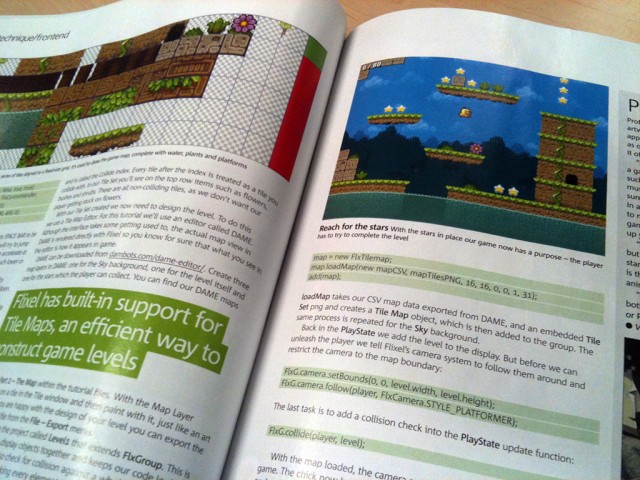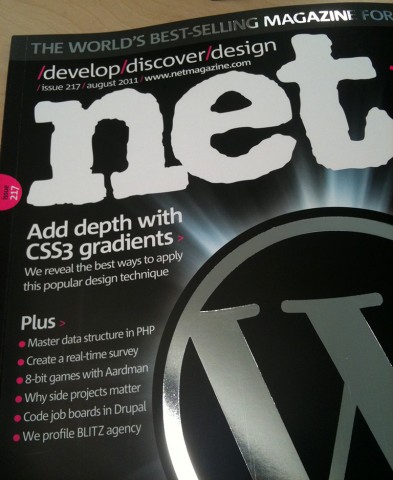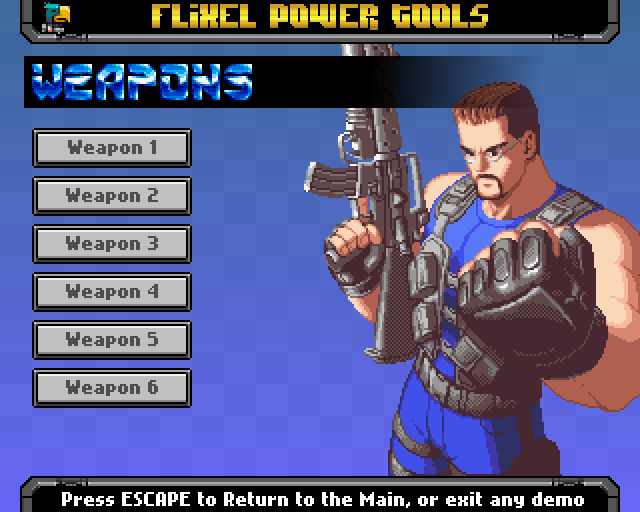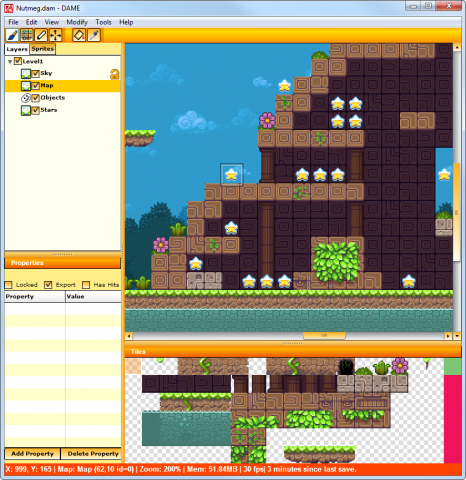Author Archive
-
Immortal 4 Bitjam Podcast – 18 Great Amiga Game Tracks
15th Jul 20112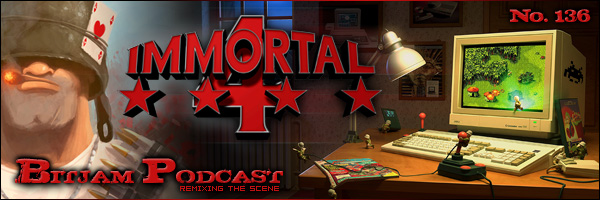
I love listening to the BitJam Podcast. It’s always full of great demoscene and game music, both old and new. But the other day they released podcast 136 which contains 18 tracks from the Immortal series of CDs. BitJam explain it best:
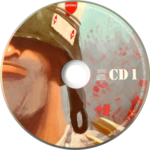 “The acclaimed “Immortal” project started to take shape in the mind of Portuguese game music composer Ruben Monteiro in 1997. The idea behind this project was (and still is) to release the greatest soundtracks from games released for the Commodore Amiga computer on CD – newly arranged and recorded in the studio, but not necessarily in a chart-compatible way. Instead, the “Immortal” producers aim to work with the original artists whenever possible: Chris Hülsbeck, Allister Brimble, Bjorn Lynne, Barry Leitch, Jason Page, Tim Wright and many others contributed exclusive tracks in the past. As of April 2011, four volumes have been released in the “Immortal” series, featuring music from classic games such as Shadow of the Beast, Turrican, Speedball 2, Pinball Dreams, Wing Commander, Alien Breed, Lemmings, or Cannon Fodder.”
“The acclaimed “Immortal” project started to take shape in the mind of Portuguese game music composer Ruben Monteiro in 1997. The idea behind this project was (and still is) to release the greatest soundtracks from games released for the Commodore Amiga computer on CD – newly arranged and recorded in the studio, but not necessarily in a chart-compatible way. Instead, the “Immortal” producers aim to work with the original artists whenever possible: Chris Hülsbeck, Allister Brimble, Bjorn Lynne, Barry Leitch, Jason Page, Tim Wright and many others contributed exclusive tracks in the past. As of April 2011, four volumes have been released in the “Immortal” series, featuring music from classic games such as Shadow of the Beast, Turrican, Speedball 2, Pinball Dreams, Wing Commander, Alien Breed, Lemmings, or Cannon Fodder.”“Immortal 4 enriches the world of computer game music, featuring remixes of the music from 35 Amiga games in newly arranged studio productions. BitFellas pays tribute to the fantastic Immortal project and presents a selection of fine music from the Immortal CDs in BitJam Podcast #136, including a previously unreleased track.”
What more can I say? Download and enjoy! And if you want to buy the Immortal 4 CD it’s on sale at Maz Sound along with the previous 3 CDs. It’s well worth it, the inlay and cover art is always beautiful. A lovely thing to actually own.
-
My .net magazine “Build a Retro game in Flixel” article is now out
20th Jun 2011.net magazine is apparently the “world’s best-selling magazine for web designers” which may be of little interest to game developers reading this, however issue 217 just hit the news stands and it contains Part 1 of my article on building an 8-bit inspired retro platformer in flixel 🙂
The article starts from ground zero and builds up, covering sprite sheets, tile maps, cameras and collision. Written for almost total beginners, with lots of well commented source code (available as a download) to accompany, it should serve as a gentle introduction to flash game dev. I will post the article on my blog eventually, but not for a couple of months. So if you’d like to see it earlier take a wander into your local newsagents, or you should be able to buy the issue online from the .net site. Part 2 will appear in issue 218 (September 2011)
-
Flixel Power Tools v1.7 – Kaboom!
16th Jun 2011It’s been a month in development but it’s finally here – Version 1.7 of the Flixel Power Tools has now gone from dev to master – and I urge you all to give it a play! I have also re-organised my site so that the tools and all sub-classes are now easily accessible from the right-hand side bar. More info, more screen shots, less scrolling 🙂
V1.7 includes a brand new Demo Suite system (don’t forget to try the Credits button 🙂 ). It’s now easier and quicker to get to the examples, which is just as well as we’ve over 60 of them in this release. Don’t forget to download the whole package from github, as it includes a Getting Started manual PDF, the full source code to all of the demos, all of the graphical and audio assets (warning: copyright, don’t use commercially!), as well as the tools themselves.
There are some great new tools and updates to nearly everything. FlxHealthBar is gone, replaced with the much more versatile FlxBar. This new bar can be used for anything, from progress meters to sprite health. It can fill in one of 8 different directions, can be hooked to a parent sprite and monitor any value of that sprite – in short it doesn’t have to be just a health bar any longer.
The biggest new addition is FlxWeapon. A comprehensive weapon manager for games. It handles creation, pooling and re-use of bullets and a heck of a lot more. Angled bullets, sounds, callbacks, fire at the mouse, fire from the mouse, fire from a parent sprite, fire from a fixed position, bullet speeds, firing rates and more! Combined with FlxControl this is a ninja combo.
FlxVelocity has been updated with lots of new functions: moveTowardsPoint, distanceToPoint, angleBetweenPoint, velocityFromAngle, accelerateTowardsObject, accelerateTowardsMouse and accelerateTowardsPoint. And FlxControl now supports rotation, thrusting and reversing.
Basically you can make an asteroids style ship movement in a couple lines of code 🙂 Of course I couldn’t resist adding some new Special FX including Blur, Center Slide and Sine Wave. Enjoy!
-
DAME 2 Released – My Favourite Game Map Editor!
2nd Jun 2011 Although I’ve been beta testing this for a while now, Charles Goatley today officially released DAME 2. I first started using DAME back in September 2010 when the first version was released on the Flixel forums, and it has gone from strength to strength since then. Charles has done a wonderful job keeping on-top of bug reports and dealing with feature requests, and v2 is easily the single biggest update yet.
Although I’ve been beta testing this for a while now, Charles Goatley today officially released DAME 2. I first started using DAME back in September 2010 when the first version was released on the Flixel forums, and it has gone from strength to strength since then. Charles has done a wonderful job keeping on-top of bug reports and dealing with feature requests, and v2 is easily the single biggest update yet.DAME is a traditional 2D Tile Map Editor running on Adobe AIR, which means it works across Windows, Mac and Linux. The map editing view is generated with Flixel, so if you use it for a Flixel game you know it’s going to look exactly the same as it does in the editor. It has a comprehensive export system and custom scripts can be written in Lua. From simple CSV or XML data to writing out fully blown AS3 classes.
Version 2 brings interface refinements and a lot of new map building tools to the table, including:
- Certain windows (tile palette, sprites, layers and properties windows) are now dockable.
- Isometric tilemap support – support for diamond, staggered diamond and skewed. Tile matrix and brushes all still work as expected with these layer types.
- Tiles can be stacked on top of each other.
- Improved visuals for selected tiles.
- Improvements to drawing on tilemaps.
- Can draw lines on tilemaps.
- Flood fill for tilemaps.
- Can select, move and scale regions in tile drawing mode.
- Can copy and paste in tile drawing mode.
- Right click when drawing brings up context menu.
- New configurable 16 colour palette for drawing.
- Tiles can be animated.
- Can have per tile properties.
- Can repeat tilemaps on individual axes.
- Can use any system font for text boxes.
- Can use bitmap fonts for text boxes.
- Increased undo history.
- New Sprite Trails – automatically populate a path with a series of sprites.
- Sprites can be automatically sorted for depth.
- Sprites can use a Z value for height placement.
- All object layers can be aligned with an isometric tilemap layer to allow exported positions to be relative to the tilemap’s ‘real’ coordinate system.
- Aligned shapes on shape layers will rotate/skew to fit the tilemap shapes.
- Can change the frame for any sprite to be different from the sprite entry.
- Tile sprites are now spritesheets – can scale and translate the image within.
- Can rip an image to create a tilemap layer and tileset.
- Choice of themes for DAME.
- Importing dam projects with sprites improved to find pre-existing matches in current project.
- Can save sprite entry lists separate to a .dam project as a .dsf (DAME Sprite File), allowing you to have multiple sharing one list of sprites.
- Can move an entire group in real-time.
- More of the session is saved in a .dam file allowing you to resume editing where you left off much easier.
- Tiles now preview in tilemap layer properties window.
- Can gives shapes different colours.
DAME isn’t just for Flixel. There are FlashPunk exporters included, and the CSV/XML export makes it easy to use in languages other than AS3. I create all my game maps with this program and look forward to making even more with v2.
Download from http://dambots.com/dame-editor/
-
Learning ActionScript 3? Here are some great books
31st May 2011After publishing my review of the recent Flash Game Development by Example book (in which my complaints were validated by similar reviews from Iain and Rasmus) I received a number of questions both by email and on Twitter asking me books what I would recommend.
The first thing I’ll say is that I don’t believe there are ANY good books that teach you how to code in AS3 by using game development as the means.
There are some excellent AS3 books, and some excellent game development ones, but all those that have tried to combine the two end up either skipping vital AS3 details, or build such basic games you don’t really learn anything about game development in the process.
Before I begin however this is important: Obviously I have not read every book there is on AS3. So my recommendations here can only be based on the books I have read and value. If you’re the author of a book not listed, that you think should be, send me a review copy. Here’s my list with links to the publishers sites (and no cheesy affiliate links!)
Learning ActionScript 3 by Rich Shupe, O’Reilly
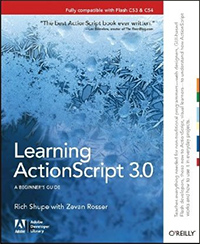 I strongly suggest the excellent “Learning ActionScript 3.0” by Rich Shupe and Zevan Rosser. Even if you’ve been coding in AS3 for a while there are things this book can teach you. It leaves virtually no stone unturned. Read this from cover to cover and you will have touched on every aspect of AS3 you need. From the way events propagate, to text handling, bitmap filters and display list management it’s comprehensive and clearly written. The only issue is that the contents are a bit dry. By this I mean you’ll never actually create anything fun while reading this, and you won’t learn a thing about game structure. But to sink your teeth into AS3 they don’t come much better than this. The 2nd edition was published at the end of 2010 incorporating Flash platform changes that entails, so if you do seek out a 2nd hand copy, make sure it’s a recent one.
I strongly suggest the excellent “Learning ActionScript 3.0” by Rich Shupe and Zevan Rosser. Even if you’ve been coding in AS3 for a while there are things this book can teach you. It leaves virtually no stone unturned. Read this from cover to cover and you will have touched on every aspect of AS3 you need. From the way events propagate, to text handling, bitmap filters and display list management it’s comprehensive and clearly written. The only issue is that the contents are a bit dry. By this I mean you’ll never actually create anything fun while reading this, and you won’t learn a thing about game structure. But to sink your teeth into AS3 they don’t come much better than this. The 2nd edition was published at the end of 2010 incorporating Flash platform changes that entails, so if you do seek out a 2nd hand copy, make sure it’s a recent one.I used to recommend Essential ActionScript 3 by Colin Moock (also by O’Reilly) but the freshness of content in this book kicks it one level higher.
http://oreilly.com/catalog/0636920010401
ActionScript 3.0 Cookbook, O’Reilly
I’m a big fan of the O’Reilly cookbooks. They come into their own when you’re starting to learn a language and have the basics down – but just need to know in which package to look to find the solution to a given problem. For example if you want to know how to load an XML file you can just pick-up the cookbook and look for that in the index. The code examples are concise and well written, and coming from a variety of authors seems to help make them more relevant. It’s a really vital book. Yes you can Google, but if you are learning a language there is no way for you to evaluate how well written (or correct!) a Googled blog post is for example. The only issue I have with this book is that it hasn’t been updated since 2008. It was however the way I learnt AS3 (used with the Essential AS3 book).
http://oreilly.com/catalog/9780596526955
Foundation ActionScript 3 Animation: Making Things Move! by Keith Peters, Friends of Ed
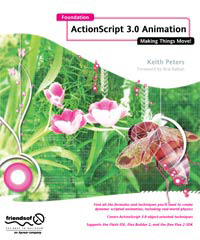 This is a brilliant book. There’s no other way to put it. It starts off with a great crash course in AS3 (take note authors, this is the correct way to do it) and then dives in to, well.. making things move! Making them properly move. None of this Flash IDE timeline stuff, but actual real physics that you can use in real games. And it’s not complicated physics either. It starts off very gently and then keeps layering it up. Bouncing, friction, gravity, velocity. Throwing objects with the mouse, collision, springs, the works. There is even a little chapter on faux 3D (which to be honest feels shoe-horned in, and isn’t very relevant today). You will learn both good structured AS3 AND very useful game development techniques from this book, which is why it’s essential reading. The only down side is that it hasn’t been updated for a while. There is a follow-up book (Advanced Animation) but it’s not as easy to get in to and feels a little more “edge case” in its application. Still a fascinating read though.
This is a brilliant book. There’s no other way to put it. It starts off with a great crash course in AS3 (take note authors, this is the correct way to do it) and then dives in to, well.. making things move! Making them properly move. None of this Flash IDE timeline stuff, but actual real physics that you can use in real games. And it’s not complicated physics either. It starts off very gently and then keeps layering it up. Bouncing, friction, gravity, velocity. Throwing objects with the mouse, collision, springs, the works. There is even a little chapter on faux 3D (which to be honest feels shoe-horned in, and isn’t very relevant today). You will learn both good structured AS3 AND very useful game development techniques from this book, which is why it’s essential reading. The only down side is that it hasn’t been updated for a while. There is a follow-up book (Advanced Animation) but it’s not as easy to get in to and feels a little more “edge case” in its application. Still a fascinating read though.http://www.friendsofed.com/book.html?isbn=1590597915
With the above 3 books I honestly believe you can go from knowing nothing at all about AS3, to having touched all the important aspects of it, and even built some really cool things in the process. Use them in combination with a framework like Flixel and suddenly a LOT of the way Flixel does things will make a great deal more sense to you. Equally if you stumble across a piece of source code online you’ll have a much better idea if you’re looking at quality code or a piece of blog filler.
Advanced ActionScript 3 with Design Patterns by Joey Lott, Adobe Press
This was recommend by both Iain Lobb and Damien Altron. Be sure you get the correct book as there is a very similar titled book published by O’Reilly. The one you want is published by Adobe Press. The first half deals with general AS3 practises and the second half the use of design patterns. From the comments I’ve read it appears it’s very well researched and written.
http://www.amazon.co.uk/Advanced-Actionscript-3-Design-Patterns/dp/0321426568
I will follow-up this post with one listing my favourite AS3 Game Development books shortly. But really, get the language down first. Then make games. Not the other way around.
Hire Us
All about Photon Storm and our
HTML5 game development services
Recent Posts
OurGames
Filter our Content
- ActionScript3
- Art
- Cool Links
- Demoscene
- Flash Game Dev Tips
- Game Development
- Gaming
- Geek Shopping
- HTML5
- In the Media
- Phaser
- Phaser 3
- Projects
Brain Food

